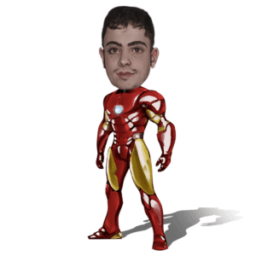HDMI is the acronym for High Definition Media Interface. HDMI is the method for connecting digital media devices (such as speakers, TVs, DVD players, and Stereos) into an integrated system. It is generally used for digital information in a high definition format, but can connect standard formats too – in this way, connection is possible between HD ready and non HD ready devices, and means that you do not need to purchase a whole new system when using one HD device, but build up full HD over time.
Incidentally, HD (High Definition) refers to digital information with a resolution of 720 or higher. Resolution refers to the number of pixels per unit; for visual displays, the unit is per square inch, the more pixels per square inch the greater the clarity of the picture.
To transfer information from one device to another, for instance, your TV and DVD player, you need a cable. With an HD system, we call these HDMI cables. They are extremely popular because interfacing only requires one wire for both audio and visual information; in the past, each medium required a separate wire.
It is important to get a high quality wire because the signal that travels down the wire can lose quality as information communicates. A well-constructed cable loses little of the original signal, whereas a poorly constructed cable may lose information to the degree that images and sounds distort beyond recognition. For this reason, it is important to pay a little extra, to maintain signal integrity.
There are many different cables to choose from, coming in a range of materials and lengths, but not all cables are equally good. Here we will consider which features you need from an HDMI cable.
Length:
Length is the main consideration when choosing your cable. You need to make sure that you purchase a cable that reaches comfortably between the devices you are connecting. It is no good purchasing a 1.5m cable when it needs to stretch from one side of a room to the other. However, cables that are longer than 1.8m need extra insulation, to ensure that information is not lost as the signal travels down the wire. When buying cables then, make sure it is the right length, and any cable over 1.8m must have further shielding. Bear in mind that with more insulation, the cables also become more expensive, so expect to pay a little more for cables greater than 1.8m (or 6′).
Material:
HDMI cables come in a range of materials, the most common of which is copper. For everyday use, copper is fine and produces great quality and very little degradation of signal. For those of you using your HD equipment for more sophisticated ventures, such as creating music, you may wish to purchase gold or silver plated cables; these will improve quality of the signal a little, but moreover, are durable and long lasting, meaning that cables do not become corrupt over time to the extent that copper cables may.
BY by GAHZLY
#Introduction #High #Definition #Media #Interfacing #HDMI


